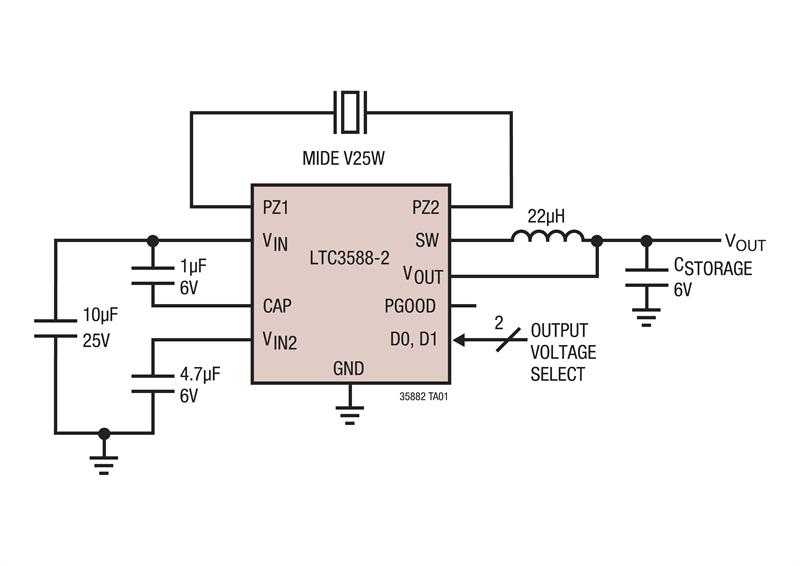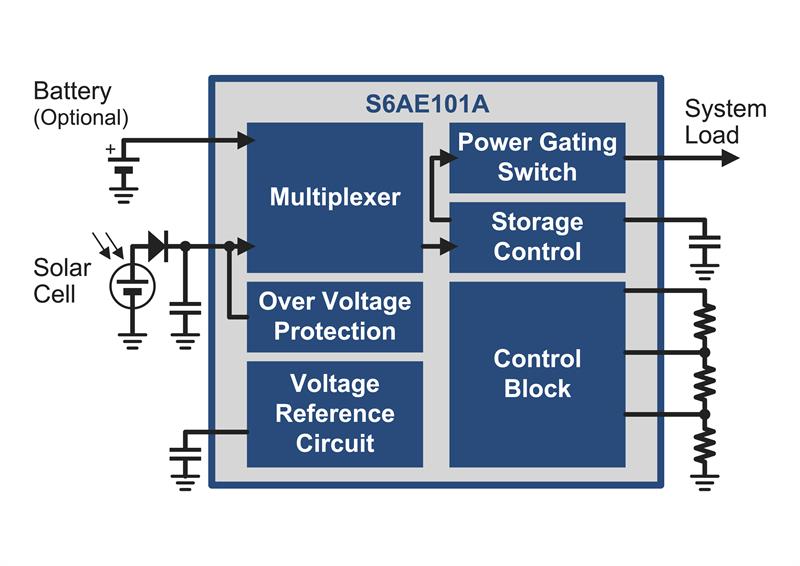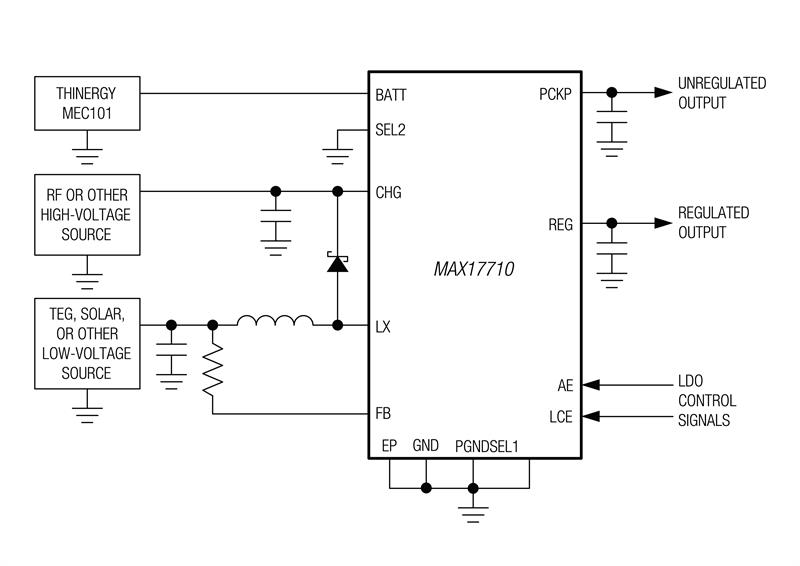The Renata CP042350 3V thin-film primary cell has an extremely low profile and is highly bendable (for more than 1000 cycles to a diameter of 50mm). It also exhibits low self-discharge, at just 1% per year. The cell has an average weight of 0.86g and is mercury free, with a shelf life of up to 10 years (when kept at 23°C). It is based on a Li/MnO2 chemistry, with a 25mAh nominal capacity and <30Ω internal resistance over an operational temperature range of -40°C to 60°C.
Housed in 20mm x 20mm x 0.4mm packages, the components in Murata’s DMH series of ultra-thin supercapacitors each exhibit 35mF capacitance across an operational temperature range of -40°C to 85°C. They have a 4.5V-rated voltage and a 300mΩ electro-static resistance (ESR). With their sleek form factor, DMH units are able to fit underneath a coin cell battery or any other available spaces within the node.
Advances in 4G/5G communications, along with improvements in the energy efficiency of smart devices, will mean that the Internet of Things (IoT) will very soon become commonplace. By way of an indication, IDC forecasts that the annual technology spend on IoT worldwide will reach $1.2 trillion in 2022 (representing a 13.6% CAGR between now and then). Furthermore, MarketsandMarkets Research predicts that there will be 17.2 billion IoT nodes and gateways in operation by 2023. However, for IoT to become truly ubiquitous, nodes will need to be able to continuously function in all potential locations – especially those that are difficult to reach. Such settings may make it impractical (or at least very costly) to conduct regular maintenance, let alone emergency repairs. In addition, having to carry out battery replacements for thousands of nodes, and the workforce needed to support such activities, will be a major obstacle to IoT proliferation.
Doing What You Can With What You Have
Energy harvesting is now being widely studied as the best viable method through which to provide power for ultra-low-power IoT applications. It takes advantage of potential sources of energy in and around the nodes themselves. Probably the most easily recognizable source for energy harvesting is solar, where photovoltaic (PV) cells are used to convert energy for incident light into electricity. Other potential energy sources include radio-frequency (RF) emissions, piezoelectricity and thermoelectricity. However, the quantities of power supplied by these sources are very low and tend to have an irregular nature, since they are completely dependent on ambient environmental factors.
A lot has been achieved in terms of PV production techniques in order to make them more efficient and cost-effective (such as the introduction of cells that can be printed on a flexible material to match the surface of the associated IoT device). Nevertheless, the industry is still faced with a very obvious difficulty – namely that nodes can only derive energy from this source for half of the day.
The ability to harvest ambient RF energy – from billions of radio transmitters, cell phones, TV/radio broadcast stations, etc., or alternatively, from dedicated sources (such as power transfer via rectennas) – can enable wireless charging of battery-based, low-power devices. Meanwhile, there is the prospect of thermoelectric harvesters being used to take energy from motors, car engines, light bulbs, and even off the human body. Energy can also be scavenged from the vibration of items of heavy machinery, the closing of doors, or air-conditioning vents in an office building by using a piezoelectric approach.
Determining the appropriate energy-harvesting technology depends on the environment where the IoT nodes will be situated. This makes it difficult to design a generic harvester. In some cases an effective solution will be the combination of two harvesting technologies – such as solar plus RF, or thermal plus RF. Another consideration is whether the use of small, thin-film or printed flexible rechargeable batteries would be most suitable, in combination with supercapacitors when a burst of power needs to be harvested or discharged, or conversely to dispense with batteries completely and just use supercapacitors.
Batteries and Supercapacitors
Smart Power Management
Whatever the source or storage method, the harvested power has to be maximized while dissipated power needs to be kept as low as possible. This can be achieved through specifying the new breed of power management ICs (PMICs) that are now emer
The LTC3588-2 from Analog Devices integrates a low-loss full-wave bridge rectifier plus a high-efficiency buck converter. This combination furnishes engineers with a complete energy-harvesting solution optimized for extracting energy from all manner of different sources – including piezoelectric, electro-mechanical and solar cells, plus magnetic transducers. An ultra-low-input quiescent current of 830nA is drawn when in under-voltage lock-out (UVLO) mode, with a 16V rising threshold enabling efficient energy extraction. The UVLO threshold also allows for input to output current multiplication through the high-efficiency synchronous buck regulator. The buck exhibits a sleep state that minimizes both input and output quiescent currents while in regulation. Four output voltages of 3.45V, 4.1V, 4.5V and 5.0V are pin-selectable, with up to 100mA of continuous output current – making this device suitable for supercapacitors, as well as Li-ion and LiFePO4 batteries. Over-voltage protection is provided by an input protective shunt (up to 25mA pull-down at 20V).
Figure 1: LTC3588-2 – typical application.

Figure 2: The Cypress S6AE101A.

The MAX17710 energy-harvesting charger and protector devices from Maxim Integrated encompass all of the power management functions for ambient energy extraction from sources with output levels ranging from 1µW to 100mW. They incorporate a lithium charger with 1nA of standby IQBATT, 625nA of linear charging and 1µW-worth of boost charging. Contained within 3mm x 3mm x 0.5mm UTDFN packages, these ICs support 1.8V, 2.3V or 3.3V low-dropout (LDO) voltages. The booster regulator circuit enables charging from a source as low as 0.75V (typical).
Figure 3: MAX17710 simplified operating circuit














